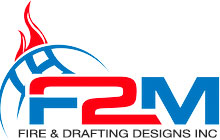Standpipe Layout And Calculations For Fire Sprinkler Systems
What are standpipe layout and calculations and work in fire sprinkler systems design? Standpipes are another safety measure to protect buildings and spaces from fire damage. The arrangement of hoses, valves, pipes, and water supply connections comprise the way standpipes work. In simple terms, it is a method to extinguish fires using a hose and pipe connection through different water outlets in a single building or space.
Standpipes should always be in compliance with the rules and codes of NFPA25. The rules and regulations allow proper and adequate layout modeling and use of standpipe systems. Mentioned below are a few types of standpipes:
Types of Standpipe
- Class I: Provides a twenty-one-and-half inches hose connection. It is suitable for fire department personnel or trained people.
- Class II: A standpipe station that has a hundred-inch hose pipe with it. It has an eleven and half-inch connection. In case of emergency, fire department personnel with adequate training use this. Normally, these stay in cabinets.
- Class III: With reducers of varying sizes is the type of standpipe with 11/2 and 21/2-inch hose connections. These provide both large and small volumes of water supply for a fire emergency.
Standpipe Layout
According to the NFPA14 code, a few conditions are necessary to design and install standpipe layouts in a building. Standpipes are important in tall and occupant buildings such as assembly areas, airport terminals, and piers. Buildings with an automatic sprinkler system at the top need a standpipe station on the stories above three grades. Buildings without an automatic sprinkler system should have a standpipe station on stories above two grades. In high-rise buildings, lengths vary between 6 and 15 meters above grade.

(Source)
Maintaining Standpipes
Inspections, maintenance, and testing are part of standpipe operations against fire emergencies. Quarterly inspections for pipes, valves, and water supply allow for a fully operational standpipe. Standpipe stations usually fall within the use of fire department personnel. They opt for them in case of fire emergencies. However, trained personnel who are occupants or workers can also rely on them in case of fires.
Regular checkups leave no room for error when trying to extinguish fires. Therefore, before designing and installing, the layout has to be very transparent in terms of accessibility. This makes it easier to prevent fire hazards.
Fire Sprinkler Systems
A flow test of the water supply is necessary before performing hydraulics calculations for the fire sprinkler system. This information can be public, and you can get it from the municipal water department. However, if there is a lack of sufficient water supply from a municipal fire hydrant, alternatives are available.
These alternatives may include ponds, lakes, gravity tanks, water tanks, and many others. Nonetheless, to generate a water flow from static sources, there must be more than usual pressure. This ensures a complete and pressurized water flow for the sprinkler heads through pipes.

(Source)
Hydraulics Calculations
There are a few important calculations for fire sprinkler systems:
- Water Flow Test: This information is usually available if you are using an open source such as municipal fire hydrants. However, if there is a closed water supply source, such as water tanks, gravity tanks, or underground water tanks, there is extra pressure, which allows a consistent flow of water through the sprinkler heads. This suggests the vitality of water flow in hydraulics calculations.
- Friction Loss: Refers to the loss of pressure that occurs due to the contact of water with the duct or pipe’s surface. This is significant because it affects the speed of the water. In emergencies, this is as vital as an entire sprinkler system.
- Sprinkler density: Refers to the sprinkler heads spread over an area. It implies that the occupancy hazard calculation is accurate, as underestimating the fire potential in a space may lead to having fewer sprinkler heads to extinguish the fire.
- Sprinkler Flow: this is a specification of the sprinkler head itself.
- Sprinkler Pressure: This entails the spray pattern and pressure of the sprinkler head. It is an important calculation because it uses the flow of the sprinkler head and its area coverage.
Standpipe Layout & Calculations for Fire Sprinkler System: Conclusion
At F2M Fire & Drafting Designs Inc., you can find professional designers for standpipes and fire sprinkler systems. You can utilize their skills to create a fire safety system for your space and thus, curtail the risks of suffering from fire relating injuries or loss of possessions.
Visit our website for more info, or email us at info@f2mfadds.com for further inquiries.
F2M Fire & Drafting Designs Inc.
1231 Lafayette Ave, Fl 2
Bronx, New York, 10474
(718) 928-3009
info@f2mfadds.com
References:
- https://firetech.com/manual-standpipes-and-acceptance-testing-methods/
- https://www.nfpa.org/news-and-research/publications-and-media/blogs-landing-page/nfpa-today/blog-posts/2019/05/10/nfpa-1-where-are-standpipes-required-firecodefridays
- https://www.qrfs.com/blog/91-standpipe-systems-part-2-standpipe-system-components-and-how-to-maintain-them/
- https://www.fireengineering.com/fire-prevention-protection/standpipes-101-part-1/#gref
